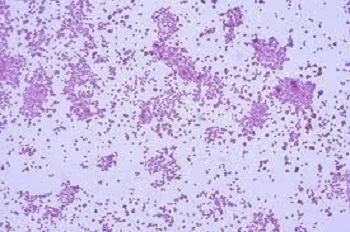Veillonella - Classification, Morphology, Clinical significance, Lab diagnosis
Classification of Veillonella
Veillonella is classified as:
Domain: Bacteria
Phylum: Bacillota
Class: Negativicutes
Order: Vellionellales
Family: Veillonellaceae
Genus: Veillonella
The genus Veillonella has 8 species, among which 4 spp. causes disease in humans:
Veillonella parvula
Veillonella dispar
Veillonella atypica
Veillonella montpellierensis
Morphology of Veillonella
Morphologically, Veillonella spp. are small, gram-negative cocci, anaerobic bacteria measuring 0.3-2.5 µm. It is usually non-pathogenic and occasionally invades the bloodstream after oral surgery.
They are non-fermentative which produces acetic acid and propionic acid-alcohol. The catalase test of Veillonella is variable.
Clinical significance of Veillonella
The role of Veillonella as a pathogen is unclear and very little is known about the virulence mechanism. They are normal flora of the mouth and urogenital tract. Their greatest concentration is found in saliva and on the surface of the tongue. They are also found in saliva and on the surface of the tongue. They are also found in URT and GI tract.
Inside the oral cavity, they reduce nitrates to nitrites. Occasionally Veillonella spp. has been isolated from infected sites (eg: abscesses, pneumonia, and sinusitis) where they are a part of mixed culture.
Veillonella spp. has been isolated in cases of endocarditis, and osteomyelitis. In IV drug abusers, they have been isolated in the case of polymicrobial endocarditis. The significance of Veillonella in clinical specimens depends upon the type of specimen collection and the likelihood of contamination by oral or genitourinary flora.
In cases of infection of Veillonella, more than 70% of the strains are resistant to penicillin.

Fig: Veillonella gram stained under microscope (Source: alchetron)
Clinical syndrome of Veillonella
The clinical syndromes of Veillonella spp. includes:
Pneumonia
Sinusitis
abscesses
endocarditis
oestiomyelitis
polymicrobial endocarditis
Laboratory diagnosis of Veillonella
Veillonella spp. produces small, round colonies with raised centers ranging from 0.5-1mm in diameter. The colonies have a grey-green appearance in blood-containing media but the colonies fail to grow in the air.
Microscopy
The gram stain of Veillonella parvula reveals gram-negative, tiny diplococci in clusters, pairs, or short chains. Colonies on anaerobic BA are small, almost transparent (semi-translucent) greyish white, smooth, entire, butterious (butter-like texture), and may show red fluorescence under UV light (360nm).
Biochemical test
Biochemical characteristics of Veillonella include:
catalase variable
oxidase negative, indole negative
Urease negative
reduces Nitrate to Nitrite
H2S production (blackening of cultures grown in V17 and V23 broth media supplemented with 0.5 gm/liter ferric ammonium citrate as an internal indicator
confirmation always requires gas-liquid chromatography
Culture
Veillonella fails to be cultured in 4% NaCl medium (V28 medium). diamond or heart-shaped colonies are observed on lactate agar medium.
Speciation requires RFLP, and analysis of PCR-amplified 16s ribosomal DNA.
* Anaerobes cannot grow in presence of O2 as they lack superoxide dismutase and catalase, the enzyme required to break down O2 species produced during aerobic metabolism.
* In addition, O2 has a high affinity for organic compounds containing N, H, C, and S which interferes with biological activity.